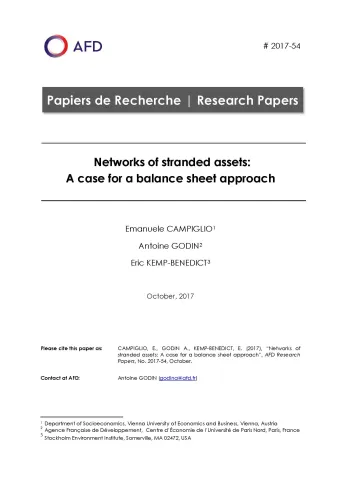Share the page
Networks of stranded assets: A case for a balance sheet approach
Published on

Moving to a low-carbon economic system will require several industrial sectors to undertake a deep technological transformation of their production processes, leading some of their physical capital assets to become stranded. This might also have a large-scale impact on the assets of the upstream and downstream sectors, producing a ‘cascade of asset stranding’, which might in turn lead financial assets to lose part of their value. Using French input-output tables as a case study, we investigate the relevance of this scenario by developing a novel measure of ‘basic centrality’ to identify relevant economic sectors from a biophysical perspective. We find the extractive sector to be at the bottom of an ‘inverted pyramid’ of interconnections. We then study the resulting network to understand the most significant channels through which a transition away from fossil fuels might propagate to the rest of the system and produce stranded assets. Understanding the financial implications of this cascade suggests the need for a balance sheet approach, both for empirical analysis and for dynamic modelling.
Useful Information
-
Authors
-
Emanuele CAMPIGLIO, Eric KEMP-BENEDICT, Antoine GODIN
-
Coordinators
-
Edition
-
54
-
Number of pages
-
26
-
ISSN
-
2492 - 2846
-
Collection
-
Research Papers
